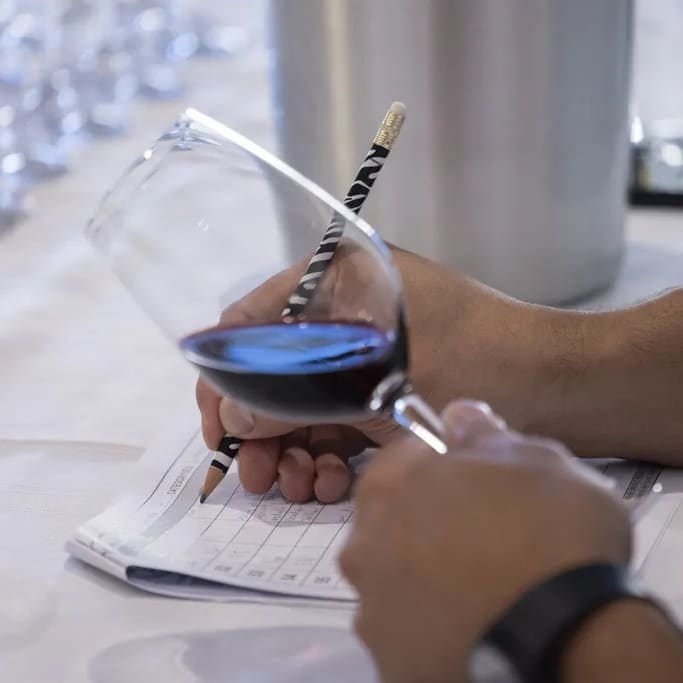 Image: TrophyWineShow.co.za.
Image: TrophyWineShow.co.za.
It might seem a bit melodramatic to invoke the spectre of the 1995 SAA Shield at this point in our wine history, but Michael Fridjhon’s recent piece serves as a timely reminder that complacency is not the enemy of success alone, but also of cohesion. If the Shield was, as Fridjhon argues, a wake-up call to the excesses of inward-looking certainty back then, the warning today is about something more insidious: the increasingly polarised ecosystem of South African wine and the gathering risk of fragmentation between producers and everyone else – trade, media and consumers.
The golden era – but at what cost?
Let’s be clear: the progress since the 1990s has been profound. The new generation of winemakers – many of them schooled at the feet of global giants – has transformed the landscape. Today, you’re as likely to find a Swartland Chenin on the list at a hip London wine bar as a Burgundy. Foreign critics gush, UK allocations vanish in hours, and South African wines routinely stand shoulder to shoulder with the world’s best, sighted or blind.
So where’s the problem? Isn’t this what we hoped for?
Well, yes. And no.
What Fridjhon points to in his critique of the industry’s reluctance to participate in blind tasting competitions isn’t quite about the blind tasting itself. It’s about what blind tasting stands for: accountability, transparency, and a shared language of quality. And that’s the crux of the issue – not whether a panel of judges prefers one wine over another, but whether we are still talking to one another, challenging each other, building something bigger than individual brands.
Fridjhon isn’t merely advocating blind tastings as a matter of principle (or angling for more entries for the Trophy Wine Show). He’s also pointing to the value of shared scrutiny and seeing beyond one’s own cellar door. On the day Winemag published his article, he privately assembled 24 well-regarded wines – all carrying respectable reputations – for a blind tasting attended by 10 top winemakers and a few judges. The results were striking: average scores drifted towards silver rather than gold or bronze, hinting at a collective tendency toward caution. Even more telling was the lack of consensus on fundamental quality markers. Are the aldehydes in this bubbly acceptable? Is pyrazine in that Cabernet a flaw or a stylistic choice? Among seasoned professionals, the room fractured over the basics.
The slow drift into silos
Whether this reflects a lack of technical agreement, tasting calibration, or simply subjective preference, it’s hard to ignore the broader message: without shared forums for debate, we are losing the muscle memory that binds an industry together. If expert palates can’t reach consensus, what chance do broader conversations have of being useful?
What’s increasingly evident is a widening disconnect. Producers on one side, increasingly disinclined to “submit” their wines to judgment (not without reason – cost, sticker fatigue, questions about marketing ROI, alienation via inconsistent standards); critics, buyers, and consultants on the other, lamenting the erosion of collective calibration. Somewhere in the middle: the punter, trying to piece together a coherent view of an industry that is innovative yet arguably increasingly fragmented.
It could be argued that Fridjhon’s premise is outdated – that producers are already engaging deeply with global peers, and complacency is the furthest thing from their minds. There’s truth there. No one spends time with the likes of Eben Sadie, Andrea Mullineux, or Luke O’Cuinneagain of Vergelegen and comes away thinking they’re phoning it in. This is a generation that reads the journals, tastes the benchmarks, and travels for perspective, in addition to working with the best vineyards they can secure.
However, the core challenge is no longer about quality. It’s about dialogue. It’s about how we construct meaning around the value of South African fine wine. Whether blind competitions still have a role is something reasonable people can disagree on – but disagreement doesn’t require disengagement. Increasingly, though, that’s what’s happening. Producers gravitate to one platform over another; buyers retreat into private tasting circles; critics defend their relevance, often shouting into a void that was once a community.
The cost is missed opportunity and ultimately industry inertia. Innovation in wine rarely happens in isolation. It happens where winemakers, writers, importers, judges, and the trade meet. Where producers say: “These are the vineyards we’re excited about.” Where sommeliers say: “Here’s what diners are responding to.” Where critics provide context – not as scorekeepers but as translators.
Look back at the SAA Shield era – for all its trauma, the aftermath forced people into rooms together. Ideas were exchanged. Standards were argued out loud. The industry got better not because one panel was right, but because everyone was exposed, publicly, to the blind spots.
That shared vulnerability was vital then, and it remains vital now.
If South African wine is to maintain its world-class trajectory, it needs to resist the drift toward silo thinking. The divide between producers and “everyone else” is an unfortunate one, born of tightened budgets, brand defensiveness, and occasionally, a whiff of self-righteousness on both sides. Instead of obsessing over producers versus critics, curated tastings versus formal competitions, we need hybrid spaces: forums for honest tasting, at the winery, in the trade, around the table, with or without judges. Places where different priorities are acknowledged, ideas exchanged, and standards debated, so that we stop talking past each other and start building the consensus that drives progress.
We’ve proven the quality. We’ve earned the attention. But unless we fight for the culture of shared insight, we risk swapping one echo chamber for another. In 1995, the challenge was to wake up to the world. In 2025, it might be to wake up to each other.

Dining and Cooking